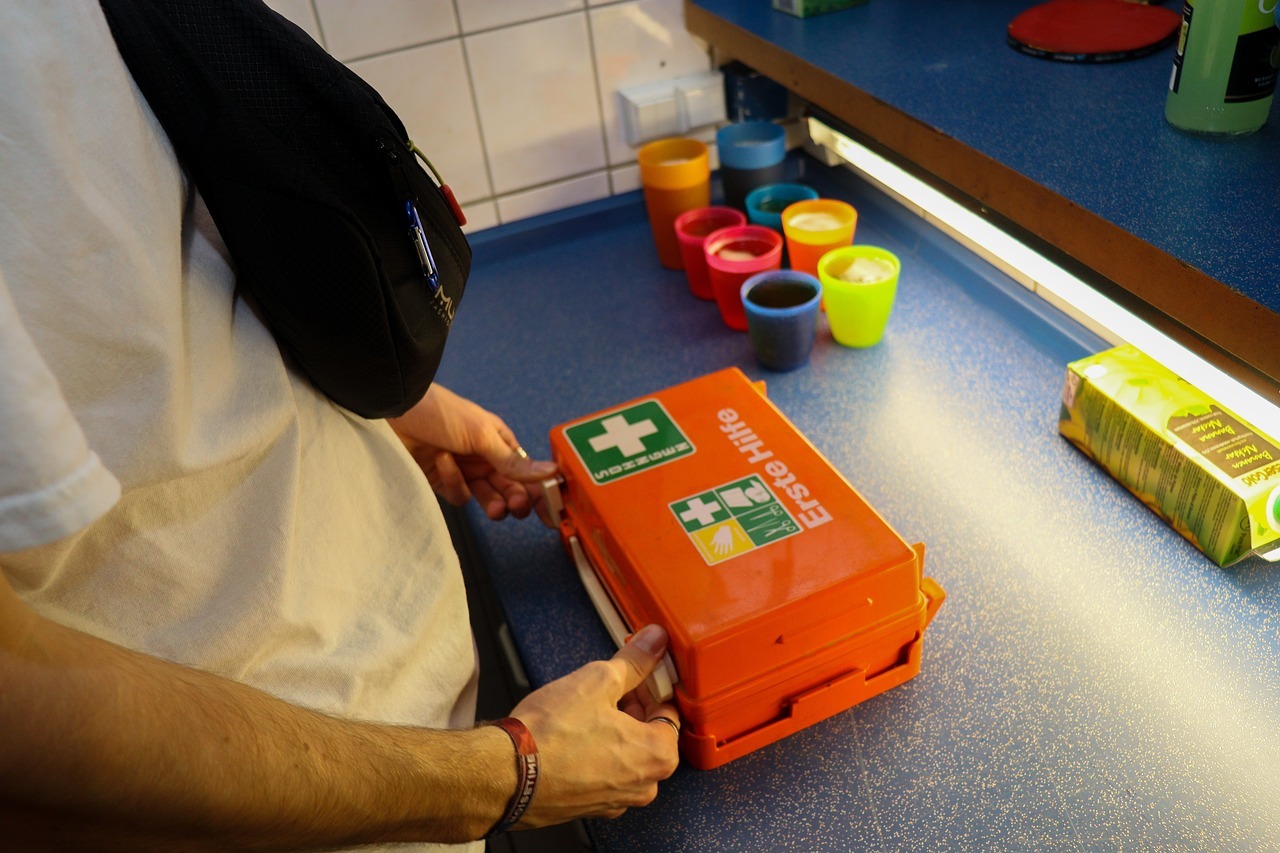Surviving in harsh environmental conditions is a challenge that requires more than just mental fortitude; it demands specific knowledge and practical skills. Extreme weather conditions, whether scorching heat or freezing cold, can pose serious threats to life and well-being. In these situations, understanding the fundamental survival techniques becomes not just useful but essential. This knowledge can make the difference between a manageable situation and a life-threatening one.
Recognizing the critical nature of this knowledge, our focus here is to equip you with practical tips and strategies for enduring the extremes of both heat and cold. These tips are designed to be straightforward and actionable, enabling you to effectively prepare for, respond to, and manage the unique challenges posed by extreme temperatures.
Understanding the Risks
The Hidden Dangers of Extreme Cold
Extreme cold is much more than a discomfort; it can be a silent, insidious threat to health and life. The two most common dangers in such conditions are hypothermia and frostbite, both of which can occur without the victim fully realizing the severity until it’s too late. Hypothermia happens when the body loses heat faster than it can produce it, leading to a dangerously low body temperature. This can impair cognitive and physical functions, making it difficult to think clearly or even move. Frostbite is the freezing of skin and underlying tissues, most often affecting extremities like fingers, toes, ears, and nose. It can lead to permanent damage and, in severe cases, amputation.
The Risks Posed by Extreme Heat
Conversely, extreme heat presents a different set of challenges, chief among them being heatstroke and dehydration. Heatstroke occurs when the body overheats to a critical level (usually above 104°F or 40°C), and it can damage the brain, heart, kidneys, and muscles if not promptly treated. Symptoms often include high body temperature, altered mental state, nausea, and rapid breathing. Dehydration, on the other hand, happens when your body loses more fluid than it takes in. In extreme heat, this can occur rapidly, leading to serious complications like kidney stones, urinary tract infections, and even seizures. Both conditions are medical emergencies and require immediate attention.
Preparing for Extreme Cold
Dressing for the Cold: The Art of Layering
When venturing into cold environments, dressing appropriately is your first line of defense. The key is layering. Start with a moisture-wicking base layer to keep sweat away from your skin. Follow this with an insulating layer, like fleece or wool, to retain body heat. The outermost layer should be windproof and waterproof to protect against the elements. Don’t forget accessories like gloves, hats, and scarves, as a significant amount of heat is lost through the head and extremities.
Shelter Strategies to Combat the Cold
Finding or creating shelter is crucial in extreme cold to reduce exposure to the harsh elements. If you’re outdoors, look for natural shelters like caves or dense forests, or create a shelter using available materials like branches and snow. In urban settings, seek insulated, windproof areas. Always try to stay dry, as wet conditions can accelerate heat loss.
Maintaining Body Heat and Energy
Your body needs extra fuel in cold conditions. Opt for high-energy foods like nuts, chocolate, and dried fruits which are easy to carry and consume. Regular meals are important to maintain energy levels. Hydration is equally crucial; drink warm fluids to maintain body temperature and avoid caffeine or alcohol as they can accelerate dehydration and heat loss. Simple exercises can also help maintain circulation and generate body heat, but avoid sweating as it can lead to faster heat loss. Remember, in extreme cold, your body is working overtime to keep warm, so provide it with the energy and protection it needs.
Navigating Extreme Heat
Dressing Appropriately for Heat Conditions
In extreme heat, the way you dress can significantly influence how your body copes with the high temperatures. Choose lightweight, light-colored, and loose-fitting clothing. Light colors reflect the sun’s rays rather than absorbing them, which helps keep your body cooler. Breathable fabrics like cotton or linen are ideal as they allow sweat to evaporate, aiding in natural body cooling. Also, don’t forget a wide-brimmed hat and sunglasses for additional protection from the sun.
Finding Shade and Keeping Cool
Seeking shade is vital in reducing direct exposure to the sun. If natural shade (like trees) isn’t available, create your own with tarps, canopies, or umbrellas. If you’re indoors, use reflective window coverings and fans to circulate air. When possible, limit physical activity during the hottest parts of the day, and try to stay in cooler, air-conditioned environments. Simple methods like cooling your skin with wet cloths or taking cool showers can also provide relief.
Hydration and Heat-Related Illness Awareness
Staying hydrated is essential in high heat conditions. Drink water regularly, even if you don’t feel thirsty, and avoid alcohol and caffeine, as they can lead to dehydration. Be aware of the signs of heat-related illnesses such as heat exhaustion and heatstroke. Symptoms can include headache, dizziness, muscle cramps, rapid heartbeat, nausea, and extreme fatigue. If any of these symptoms occur, it’s crucial to cool down and hydrate immediately, and seek medical attention if conditions don’t improve. By understanding and respecting the risks of extreme heat, you can better protect yourself and maintain health and safety.
Essential Survival Skills
Fire Building Techniques in Various Climates
In both cold and hot environments, the ability to build a fire can be a lifesaver. In cold conditions, fire provides warmth, enables you to melt snow for water, and can be a signal for rescue. In hot environments, fire can be used for cooking and purifying water. The key to building a fire is to start with small, dry tinder and gradually add larger pieces of wood. Protect your fire from the wind, and in snowy conditions, build a platform to prevent the fire from sinking into the snow. In dry, hot conditions, be extremely cautious and always build a fire in a clear, contained space to prevent wildfires.
Navigation Tips for Safety
Being able to navigate to safety is crucial in any survival situation. Always carry a map and compass and know how to use them. In the absence of these tools, use natural indicators like the position of the sun or the stars for basic orientation. In both cold and hot climates, it’s often best to travel during the cooler parts of the day to conserve energy. Pay attention to landmarks and avoid taking unnecessary risks like crossing dangerous terrain.
First Aid for Cold and Heat Injuries
Basic first aid knowledge is vital for treating injuries related to extreme temperatures. For cold injuries like frostbite, gently warm the affected area but don’t rub it, as this can cause more damage. For hypothermia, warm the core body first, not the extremities. In cases of heat-related illnesses, move the person to a cooler place, apply cool cloths, and provide sips of water. Never give fluids to an unconscious person. In both extremes, seeking medical attention as soon as possible is crucial. Remember, the best first aid is prevention, so dress appropriately, stay hydrated, and be aware of your environment and its dangers.
Top of Form
Emergency Preparedness
The Necessity of an Emergency Kit
Having an emergency kit is crucial in any extreme weather situation. Your kit should be tailored to the environment but generally include the following essentials:
Water and Non-perishable Food: At least a gallon of water per person per day for several days, and a supply of non-perishable food items.
First Aid Supplies: Bandages, antiseptic wipes, pain relievers, and any personal medications.
Clothing and Bedding: Weather-appropriate clothing and blankets.
Light and Heat Sources: Flashlights, extra batteries, matches, or lighters. Consider a hand-crank flashlight or solar charger.
Tools and Supplies: A multi-tool, whistle, compass, map, and fire-starting materials.
Communication Devices: A battery-powered or hand-crank radio, and a fully charged cell phone with a portable charger.
Communicating Your Plans and Location
Before embarking on any trip, especially to remote or extreme environments, inform someone about your plans. Provide details like your destination, route, expected return time, and any stops you plan to make. Check-in regularly if possible. This information is vital in case of an emergency or if you fail to return as scheduled.
Signaling for Help in Remote Areas
In remote areas, being able to signal for help can make the difference between a quick rescue and a prolonged survival situation.
Visual Signals: Use brightly colored clothing or materials to create a visible sign. Mirrors or any reflective object can be used to signal using sunlight.
Audible Signals: Whistles are more effective than using your voice and require less energy. Three blasts are a standard distress signal.
Fire and Smoke: A fire can be seen from a distance, especially at night. Adding green vegetation to the fire can create smoke, making it visible even during the day.
Technology: If available, use a GPS device, satellite phone, or personal locator beacon (PLB) to send out a distress signal.
In all cases, the key is to be as noticeable as possible to rescuers, whether they are on the ground or in the air.
Final Words
Whether facing the piercing chill of extreme cold or the oppressive heat of a scorching environment, understanding the risks and knowing how to respond can be life-saving. Key strategies like appropriate dressing, shelter seeking, maintaining hydration and energy, and knowing emergency protocols are invaluable in any extreme climate.
Natural world, while often beautiful, can present formidable challenges. Respecting these forces, arming yourself with the right knowledge, and staying vigilant about safety measures can significantly mitigate the dangers. Ultimately, the key takeaway is that preparation and informed caution are the best tools at your disposal in any extreme weather situation. Armed with these tools, you are much better equipped to face and overcome the challenges posed by the harshest of nature’s offerings.






